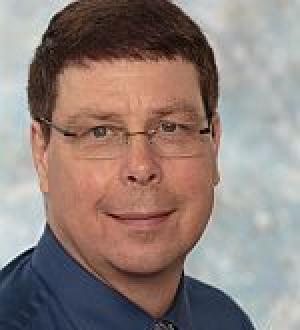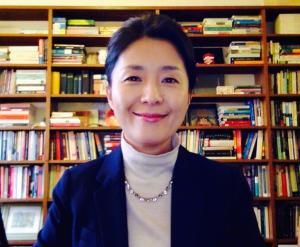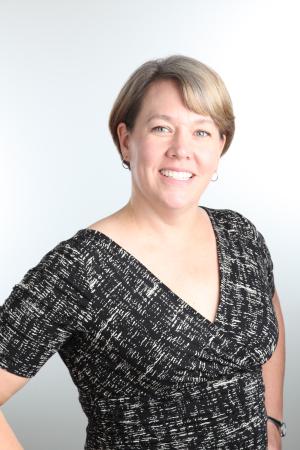Resources

In Luke 1:20, an angel named Gabriel informs the priest Zechariah that he will remain mute during his wife Elizabeth’s pregnancy. Zechariah’s mistake was to doubt Gabriel’s announcement that they would have a child despite decades of infertility. Perhaps Gabriel made a mistake by reacting harshly to a question any reasonable human would have asked, but I have come to understand the priest’s silence as a prescription more than a punishment. I imagine a muted Zechariah growing spiritually and relationally as he listened more to Elizabeth, to their relative Mary, and to the Spirit who would guide and empower their son. I found myself identifying with Zechariah while participating as a learner in Dr. Mitzi J. Smith’s excellent course on African American Interpretation and the Gospel of Luke.[i] When we discussed my role prior to the course, Mitzi made it clear that I must not speak or write in ways that undermined her authority as the instructor. At her request I did not post any messages in the preliminary discussion forums in Moodle. One exception that Mitzi approved was a message explaining my relative silence and encouraging openness to womanist hermeneutics.[ii] When we transitioned to intensive sessions in Zoom, Mitzi sometimes asked my opinion, and she included me in breakout discussion groups. Even so, I remained one of the quietest learners in the class. Although I identified with Zechariah’s temporary silence, his privilege offers a more enduring analogy. My privilege has included a history of talking in class. My parents valued education highly and had resources to help me succeed, including my mother’s training and experience in early childhood education. With their encouragement, I became a precocious talker, quick to get teachers’ attention and give answers they wanted. Not all of my classmates were so advantaged. In How to Be an Antiracist, Ibram X. Kendi describes the anger he felt at biased teaching in third grade. A white teacher regularly ignored raised non-white hands while engaging with favored white children.[iii] The flip side of similar biases enhanced my education in many respects, but there were drawbacks. I missed out on what others would have said if I had not taken so much “air time,” and my relationships were often better with adults than with peers. I was oblivious to the injustice. The skills and habits I learned as a child helped me compete for attention, grades, honors, and scholarships all the way through a PhD program. An MDiv program that emphasized collaboration taught me to dial back competition and seek the good of a whole class, but I still talked a lot. I continue to do so as a seminary professor. Extensive research has documented the impact of implicit bias on students’ achievement at all levels of education.[iv] There seem to be fewer studies focused on the impact of implicit bias on students’ perceptions of minoritized and women professors,[v] but I am learning from Mitzi and other colleagues that it is a serious problem. For many (but not all) students, my race and gender lend me added authority, whereas the same students may discount the authority of professors who are not white or male. For Mitzi these biases are headwinds that impede her teaching. Patriarchal biblical texts and interpretations have long supported to the silencing of women, and Luke-Acts has contributed to that injustice because most female characters model traditional silent roles. Mary’s prophetic hymn in Luke 1:67-79 is an important exception, but the overall impression remains. In relation to that tradition, Mitzi’s strong leadership and my relative silence constituted a small dose of justice. Most prescriptions come with warning labels, and so should silence. When privileged people remain comfortably silent in the face of oppression, we perpetuate injustice by refusing to add our voices and energies to movements for change. Silence can also be a symptom of passive-aggressive relationships, where resentments fester without being addressed in a timely way. Like fasting, silence is only healthy when it is temporary. It is best when chosen, not imposed, and when rooted in trust, not fear. In academic settings, silent students might be hiding a failure to prepare, or they might be afraid that voicing their thoughts will lead to negative judgments. My own motives for silence were mixed. I was willing to comply with Mitzi’s wishes and eager to hear what others had to say during each of the challenging and engaging sessions. I was also anxious not to fit the stereotype of a well-intentioned but clueless white guy. I abhor racism and sexism, but I also recognize that I am not entirely free from them. I did not want to say “the wrong thing.” Dr. Marcia Riggs has wisely suggested that intentional, interpersonal work on race and gender would have been valuable earlier in our collaboration.[vi] The course was not an appropriate space in which to do that work, but I hope to do more in the future. I also hope that my experience of “stereotype threat” will deepen my empathy and strengthen my planning for students who may be silent due to fear.[vii] Discernment of when to speak and when to remain silent is an essential skill for theological educators and for everyone who seeks justice. Zechariah’s silence prepares him to prophesy like Mary, and I hope to benefit from the same prescription. Notes [i] For more information about the course and the related Wabash Center grant project, search for previous posts by Drs. Mitzi J. Smith and Daniel W. Ulrich, beginning with “Learning Womanist Hermeneutics during Covid-19” at https://www.wabashcenter.wabash.edu/2020/07/learning-womanist-hermeneutics-during-covid-19/. [ii] Thanks to Mary Hess for suggesting this step. [iii] Ibram X. Kendi, How to Be an Antiracist (New York: One World, 2019), 44-55. [iv] See, for example, the studies summarized in Rachel E. Godsil et al., The Science of Equality, Volume 1: Addressing Implicit Bias, Racial Anxiety, and Stereotype Threat in Education and Health Care (Perception Institute, 2014), accessed August 28, 2020, http://perception.org/wp-content/uploads/2014/11/Science-of-Equality.pdf. [v] On the impact of race, see Bettye P. Smith, “Student Ratings of Teaching Effectiveness: An Analysis of End-of-Course Faculty Evaluations,” College Student Journal 41, no. 4 (December 1, 2007): 788–800. On age and gender see Alison F. Doubleday and Lisa M. J. Lee, “Dissecting the Voice: Health Professions Students’ Perceptions of Instructor Age and Gender in an Online Environment and the Impact on Evaluations for Faculty,” Anatomical Sciences Education 9 (2016): 537–44. [vi] Marcia Y. Riggs, “To Teach Collaboratively or Not?” [vii] “Stereotype threat” is fear of acting in ways that confirm a stereotype of a group to which one belongs. For research demonstrating its negative impact on learning, including in discussions of race, see Godsil, The Science of Equality, 31-33.

New learning that counters established or accepted knowledge is challenging. My “Global Read of the Bible” course introduces students to different interpretations by Christians from around the globe. Many global Bible readers are critical of the relationship between western colonialisms and the role of the Bible as a tool of oppression. In my first-year teaching, a very thoughtful and engaged white female student reacted emotionally, strongly dissociating herself and her ancestors from western colonialism. In another class, when I discussed how some biblical texts had silenced women, a black male student asked how a woman professor can teach and have authority over men at a seminary! If education is to be formational and transformational, how can we deal with difficult topics related to the privilege and oppression internalized in the teacher and students? This big question is even more complicated when we consider intersectionality and the complexity of identities, but “unlearning” may open the way to approaching this question. The word “unlearn” means discarding or nullifying what we have learned when it is wrong, false, or outdated; to “forget your usual way of doing something so that you can learn a new and sometimes better way.” Yet often, we cannot conveniently remove what we know. What we learn through oppression is inscribed in our bodies. Defining feminist work as memory work, Sara Ahmed argues: Experiences … seem to accumulate over time, gathering like things in a bag, but the bag is your body, so that you feel like you are carrying more and more weight. The past becomes heavy….” (Sara Ahmed, Living a Feminist Life, 23) Previously experienced or continued oppression may lead to suppressing the feeling of shame. You learn to be un- or less affected, or try to forget what should not have happened. So, the definition of “unlearn” is half right when it applies to oppression. Students, as well as the teacher, come to class as embodied beings. Some have unforgettable memories of violence and ineradicable experiences of oppression. In her House Floor speech on July 23rd, Rep. Alexandria Ocasio-Cortez responded to Rep. Yoho’s non-apology over his vulgar insult of her on the steps of the Capitol. She had encountered that type of harassment many times—at restaurants, on the streets, and in the subway, just like other ordinary women. Yet, she stood up for other women and girls using her privilege. The power and pain of the speech lie in her remembering all those past events. Her hearers gathered their own memories and connected them into a fuller picture of women’s status and humanity. Unlearning also applies for the privileged. We gain knowledge in interactions with the social body—societal systems and institutions that give power and opportunity to specific groups of people. So, the privileged learn and embody their privilege without recognizing that they have it. Whiteness is such a privilege. By naming the privilege and internalized superiority, we begin the unlearning process. My conscientization came in my undergraduate “Sociology of Education” classroom. The professor told us that studying at the prestigious women’s university was a privilege, which was made possible at the expense of other women of our age. I was shocked. Surely, I hadn’t done anything wrong to them. And, my parents had to work so hard to pay for their daughter’s tuition. Yet, this powerful education has helped me to always ask what privilege(s) I have over others in different contexts—even as a racial/ethnic minority woman in the U.S. Borrowing Ahmed’s words, I would say unlearning is a memory work. Unlearning is a work—a work “to remember what sometimes we wish would or could just recede” (Ahmed, 22). If the space is safe enough for such work to take place, it can generate tension and conflicts among students. Still, my students are encouraged and willing to listen to others and unlearn their privileges, a conscientization that they will use to benefit others. Although such discussions do not have to be personal, what we teach and learn—even seemingly abstract ideas—are grounded in people’s lives and social realities, including past and present marginalization and oppression. The pandemic has exposed such disparities among peoples so that unlearning occurs not only in the classroom but also in public squares and virtual spaces. We see the potential of our (un)learning as collective and social. I imagine the student who responded to other people’s suffering defensively nonetheless continues her journey toward the liberation of herself and others among her communities and the masses.

For many years I have been involved with a team of instructors teaching a required first-year formation class at the Iliff School of Theology. Initially called “Identity, Power, and Difference,” we designed this class to invite students to reckon with the realities of structural inequality and oppression in relation to their vocational paths. Our goal was to increase student commitment and capability for seeking justice as a core part of their religious leadership in multiple contexts. Additionally, the course was designed to allow students the space to begin to wrestle with the emotional and personal implications of these systemic issues before they encountered them in classes in Christian history, theology, ethics, sacred texts, and practical theology. In those courses, they would need to work with these issues in more complex academic ways, and not become overwhelmed or resistant because of fragility or novice learner status. This is particularly important for students whose identities often place them on the upper side of hierarchies of privilege and oppression and who were not practiced in understanding and navigating such realities. One of the commitments early on was to attempt to work intersectionally, rather than learning about oppression identity category by identity category. We didn’t want to begin working with racism, then sexism, heterosexism, classism, and maybe have time in a ten-week quarter to get to oppression rooted in ability, religion, nation of origin, age, etc. We wanted to avoid setting up the idea that these are competing categories demanding attention and redress. Many helpful resources (such as the Teaching for Diversity and Social Justice textbook edited by Maurianne Adams and Lee Ann Bell) take precisely this approach, providing materials that focus on one area of identity-based oppression at a time. There is a clarity of focus on each particular form of oppression in this approach. However, the realities of intersectionality, first articulated by legal scholar Kimberlé Crenshaw, mean that doing so often makes invisible the experiences of those who reckon with multiple forms of intersecting oppression. It also obscures the ways that a single person may have a complex identity matrix that includes both targeted and dominant elements (gay white men or straight women of color, for example). The concern is that imagining that these forms of oppression work independently from one another, or that they do not develop together historically or inflect one another constantly, sets students up to focus on one aspect and fail to recognize complex social dynamics in which their work occurs and the shifting ways their embodiment is interpreted by those around them. Of course, all forms of oppression and inequality do not function in the same way. But, we found that working thematically, and then providing examples of how those themes play out within different contexts and structures, helps students see patterns and intersections as well as distinctions between particular forms of injustice as they are practiced and institutionalized. For example, we begin with the theme that difference is socially constructed at particular moments in history, becomes embedded in institutions and systems, and creates material inequalities with its hierarchical sorting of humans. We look at this from multiple vantage points, from disability studies to critical race theory to gender studies, privileging personal narratives and historical examples that involve more than one identity category. Likewise, when we work on the theme of the relationship between privilege and oppression, we explore how these dynamics work with Christian privilege, class privilege, white privilege, cisgender, and male privilege. Other themes we explore include everyday intersectionality, modes of resistance, solidarity and accomplicing, and communal vocational discernment. Teaching intersectionally means that students often find themselves simultaneously being challenged and their experiences affirmed in relation to various themes. At times they recognize their own privilege, and at times they recognize how their experiences and embodiment have been targeted and made invisible by social structures and practices of distinction. Our hope is that by working at the intersections, we help build empathy, solidarity, and recognition of difference that will allow our students better to acknowledge, navigate, and dismantle injustice in the everyday interactions of religious leadership. Such work begins in the classroom and, of course, requires committed communal work of all of our lifetimes to complete.